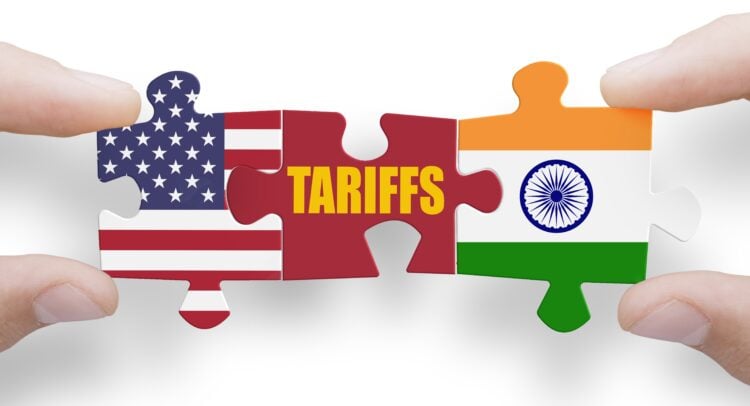India is closing in on a landmark trade deal with the United States that could slash U.S. tariffs on Indian imports to about 15%–16%, down from roughly 50% today. The agreement, first reported by Mint, would mark one of the most significant resets in bilateral trade relations in more than a decade.
Elevate Your Investing Strategy:
- Take advantage of TipRanks Premium at 50% off! Unlock powerful investing tools, advanced data, and expert analyst insights to help you invest with confidence.
India and the U.S. Edge Toward Compromise
According to officials cited by Mint, both sides have reached a preliminary understanding covering key sectors such as energy, agriculture, and manufactured goods. The deal is expected to be finalized and announced at the upcoming ASEAN Summit.
Washington’s offer would dramatically lower tariff barriers for Indian exporters, while New Delhi is said to have agreed to gradually curb its purchases of Russian crude oil. In exchange, India will gain wider market access for products like textiles, chemicals, and automotive components.
For the United States, the pact would open India’s domestic markets to American agricultural goods, particularly non-genetically modified corn and soymeal. This issue has long been a sticking point in trade talks. It would also signal a thaw in trade tensions that have persisted since 2019, when the Trump administration revoked India’s preferential trading status under the Generalized System of Preferences program.
India and U.S. Rework Trade Strategy
Both capitals have reasons to move now. Tariff fights are flaring again, and shifting energy alliances have pushed Washington and New Delhi to find common ground. President Donald Trump said last week that energy cooperation featured prominently in his recent call with Prime Minister Narendra Modi, who reportedly pledged to limit Indian oil imports from Russia.
For New Delhi, a deal would strengthen its supply chains, secure U.S. energy access, and ease cost pressures on export industries. For Washington, it would mark a geopolitical win, which would curb Moscow’s economic reach while deepening ties with a fast-growing democratic partner in Asia.
If signed, the agreement would make Indian exports to the U.S. significantly more competitive overnight. Lower tariffs could push new growth in sectors such as apparel, pharmaceuticals, and machinery, while American farm exports would find a new foothold in India’s consumer market.
Markets Are Waiting for a Breakthrough
Equity markets in both countries are already watching the negotiations carefully. A finalized deal could lift shares of India’s export-heavy manufacturers and boost sentiment in trade-linked industries. Currency traders, meanwhile, are gauging how lower tariffs and reduced Russian oil imports might shift India’s demand toward U.S. and Middle Eastern energy suppliers.
Still, several issues remain unresolved, including how quickly tariff reductions will be phased in, and whether India’s agricultural safeguards will ease enough to accommodate American producers.
For now, optimism outweighs doubt. The prospect of a 15% tariff regime signals that India and the U.S. are no longer negotiating at the margins but redefining the rules. If sealed at the ASEAN Summit, this deal could mark the most consequential realignment in U.S.–India trade since the early 2000s.
Stay ahead of macro events with our up-to-the-minute Economic Calendar — filter by impact, country, and more.
















